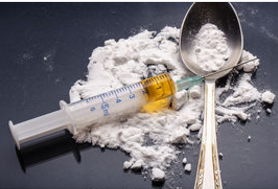An increasing number of grandparents are raising their grandchildren, largely because many of the children’s parents are addicted to heroin or prescription drugs, both increasing problems in rural areas, Teresa Wiltz reports for Stateline.
In 2015, 2.9 million kids were living with their grandparents, up from 2.5 million in 2005.

“Child welfare officials say drug addiction, especially to opioids, is behind much of the rise in the number of grandparents raising their grandchildren, just as it was during the crack cocaine epidemic of the 1980s and ’90s,” Wiltz writes.
That has led to a growing number of children being neglected or abandoned and for caseworkers to turn to grandparents for help, largely because the foster care system is already overcrowded with children of addicts.
“Federal law requires that states consider placing children with relatives in order to receive foster care and adoption assistance,” Wiltz writes. “And grandmothers and grandfathers often are the first—and best—choice when state and local caseworkers have to take a child out of a home and find someone else to take custody, said Angela Sausser, executive director of the Public Children Services Association of Ohio, a coalition of public child-safety agencies in the state.”
Generations United, a group that works to improve the lives of youth and older adults, says that grandparents and other relatives raising children save taxpayers $4 billion each year by keeping the children out of the foster care system, Wiltz reports. But some of those grandparents might not be equipped to handle raising a child. Generations United says that 21 percent of grandparents caring for grandchildren live below the poverty line, 39 percent are over 60 and 26 percent have a disability. “And because many are not licensed in the system, they are not eligible for the same services and financial support as licensed foster parents.” (Read more)
Nationally, poisonings of youth from opioids rose 165 percent from 1997 to 2012
More than 13,000 Americans age 19 and under were hospitalized for opioid poisonings from 1997 to 2012, says a study at the Yale School of Medicine, published in JAMA Pediatrics.
The incident rate rose from 1.4 per 100,000 people in 1997 to 3.7 per 100,000 in 2012, an increase of 165 percent. The study found that 176 of the victims died during hospitalization. (Yale graphic: Hospitalizations for opioid poisonings for people under 20 from 1997-2012)

The study, which analyzed U.S. pediatric hospital discharge records every three years from Jan. 1, 1997, through Dec. 31, 2012, found 13,052 instances of opioid poisoning for people between the ages of 1 to 19. Hospitalization rates were highest in older adolescents 15 to 19—they increased from 3.69 per 100,000 to 10.17 per 100,000—but the largest increase was among toddlers, with incidences among those 1 to 4 years old increasing 205 percent, from 0.86 to 2.62 per 100,000, for a total of 1,531.
Epidemiologist Julie R. Gaither, the study’s lead author, said research points to the likelihood that the majority of incidences among those 1 to 4 were accidental, from children getting into drugs prescribed to their parents, Ariana Eunjung Cha reports for The Washington Post.
There were few cases of poisonings among those 5 to 9, with researchers saying children at these ages were able to tell the difference between candy and a dangerous drug. But once children hit 10, incident rates began to climb, and are more likely attributed to suicide or self-inflicted injury, Gaither said.
From Kentucky Health News
















